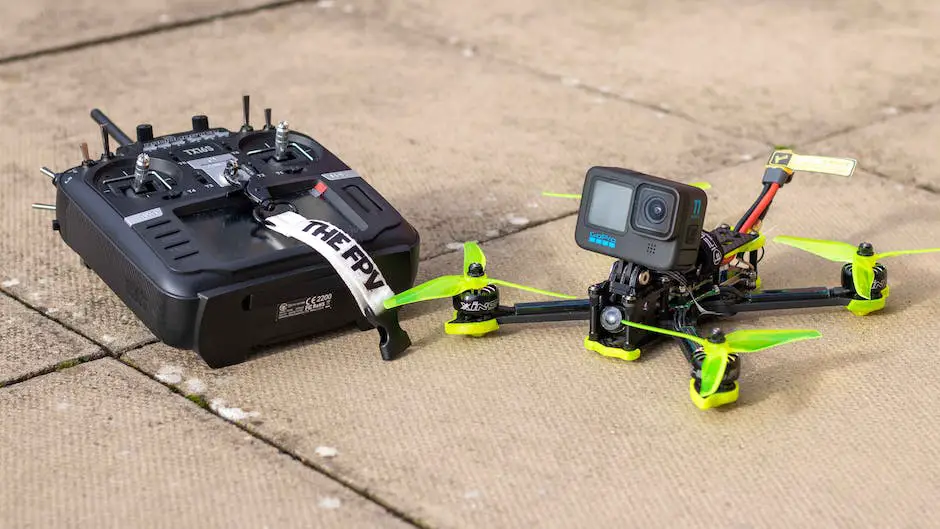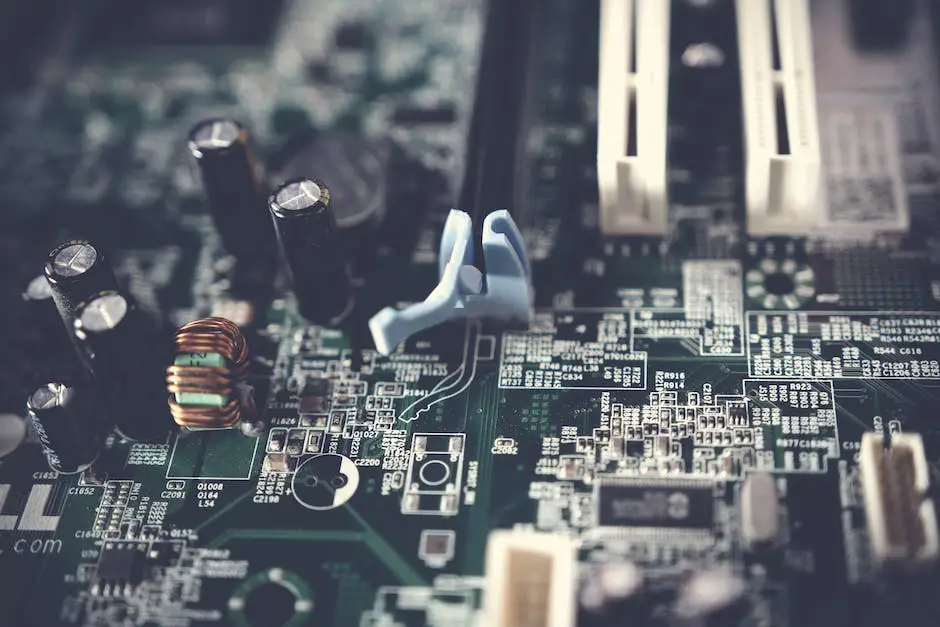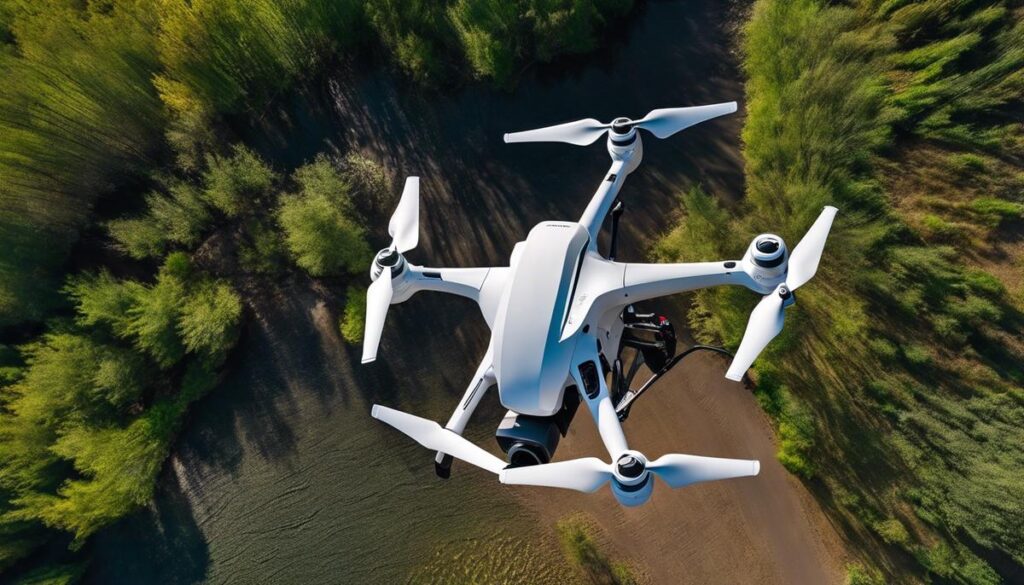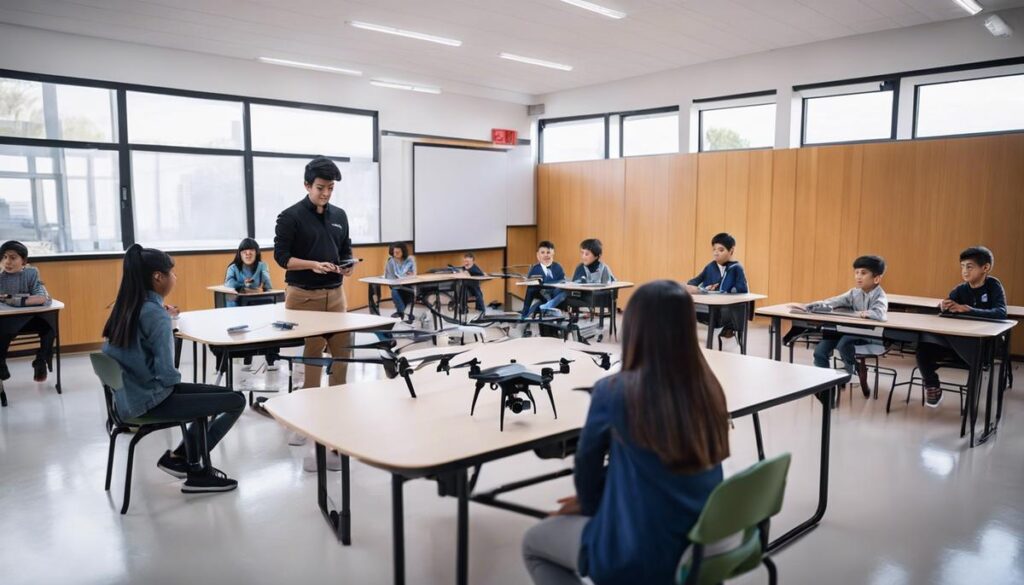The exhilarating world of First Person View (FPV) drones offers a unique blend of technology, skill, and the thrill of flight from a pilot’s perspective. As you embark on this adventure, understanding the intricacies of FPV drone components is your first step towards mastering the skies. The journey from a hobbyist to a skilled FPV drone enthusiast traverses through a landscape of learning and practical experience, involving the selection of gear, understanding the functions of each component, and the hands-on experience of building your very own drone. This comprehensive guide serves as your roadmap to navigate the complexities of FPV drone setups, simplifying the technical jargon and providing you with the necessary knowledge to assemble and pilot your aircraft with confidence.
Understanding FPV Drone Components
The Building Blocks of an FPV Drone – Every Part Matters!
So, you’ve dipped your toes into the world of FPV (First Person View) drones and are itching to understand what makes these nimble flyers tick? Whether you’re a budding pilot or a seasoned drone enthusiast looking to DIY your next flying marvel, knowing the essential components is key to a successful build. Let’s jump into the core elements that constitute an FPV drone.
- Frame:
First and foremost, the frame of your FPV drone is the skeleton holding everything together. Think of it as the chassis of a car. It doesn’t just support the entire structure but also plays a crucial role in determining the size, weight, and overall durability of your drone. Frames come in various shapes and configurations, typically designed with carbon fiber for a strong yet lightweight build – perfect for those hairpin turns and aerial acrobatics!
- Motors:
These are the muscles of your FPV drone, providing the thrust needed to soar through the skies. Each arm of your drone’s frame will usually sport a motor, which translates electrical power into rotational force, propelling your drone. When choosing motors, balance is the game; you want enough thrust to have fun but not so much that it wreaks havoc on your battery life.
- Electronic Speed Controllers (ESCs):
Consider ESCs the maestros conducting the power symphony to the motors. They regulate the speed and direction of the motor’s spin, enabling precise control for the pilot. Often, ESCs are integrated into a single board, known as a 4-in-1 ESC, which simplifies wiring and installation.
- Flight Controller:
The nucleus of an FPV drone is the flight controller (FC). It’s a tiny computer that processes input from the pilot and sensors, adjusts the ESCs, and keeps the drone stable and responsive. It’s pivotal to select a flight controller that’s compatible with your other components for seamless communication and integration.
- FPV Camera and Video Transmitter (VTX):
The ‘FPV’ in FPV drone comes from the camera and video transmitter combo. This is where the rubber hits the road, capturing real-time video and sending it screaming back to your goggles or monitor. While camera choice is often about resolution and field-of-view, the VTX hinges on transmission range and power. A good setup can mean the difference between a clear image and a staticky disappointment.
- Receiver:
This is your two-way communication line with your drone. The receiver takes the inputs you give from your radio transmitter and relays it to the flight controller. Without a quality receiver, your drone is like a ship without a rudder; you can throttle up, but good luck telling it where to go.
- Propellers:
Props are the unsung heroes of FPV drones, translating all that motor power into lift and thrust. Propeller choice affects everything from speed and agility to how your drone handles the air. While it may seem like a “the more blades, the better” situation, each additional blade can add to battery drain. It’s about striking the right balance for your flying preferences.
- Battery:
All parts great and small need energy, and for an FPV drone, this emanates from the battery. Lithium Polymer (LiPo) batteries are the go-to for their excellent energy density and weight ratio. But with power comes responsibility; understanding voltage, capacity, and discharge rates is crucial to ensure you get the most flight time without compromising the drone’s performance.
- Antennas:
Efficient antennas for both your video feed and control link are vital for maintaining a strong and clear connection to your drone. Skimping on antennas can lead to decreased range and increased frustration.
- Goggles or Monitor:
Lastly, what’s an FPV drone without the, well, first-person view? FPV goggles or a monitor provide the visceral, in-the-cockpit experience from your drone’s camera to your eyes. Depending on your budget and preference, screens can range from basic monitors to fully immersive goggles with all the bells and whistles.
In a nutshell, building an FPV drone is like piecing together a high-tech puzzle where each part plays a significant role. From the sturdy frame that houses all the tech, to the spinning propellers that slice through the air – every component must work in harmony for that magical flight experience. With careful selection and assembly, you’ll be up in the clouds, feeling the adrenaline of flight, and viewing the world from a drone’s-eye view in no time!

Choosing Your FPV Gear
Selecting the Right FPV Gear: A Guide to Perfecting Your Flight Experience
So, you’ve made it this far, with a solid grasp of every component from the frame to the goggles. Fabulous! Now, let’s dive a bit deeper into how to cherry-pick the FPV gear best suited to your needs, ensuring your flight sessions are not just good, but great.
Understanding Your Flight Style
The first step is to pin down your flying style – are you a racer craving speed and agility, or a freestyle flyer looking for fluidity and range? Perhaps you’re an aerial photographer aiming for stability and clarity. Your style dictates your gear requirements, so start there.
Selecting a Goggle Setup
For immersive flight experiences, you can’t skimp on goggles. Analyze the resolution and field of view; a higher resolution improves image clarity, while a wider field of view deepens immersion. Reception quality can make or break your flight, so choose goggles with robust receiving capabilities and, if possible, go for multiple antenna connectors. Consider comfort — adjustable straps and faceplates make a difference in long sessions.
Fine-Tuning Video Transmission
Finding the sweet spot in video transmission hinges on balance. A high-quality VTX with adjustable output power gives you flexibility for different environments. Keep in mind, though, higher power drains batteries faster and may interfere with others if you’re not flying solo. Research local regulations to ensure your setup complies with transmission power limits.
Balancing Range and Reliability
With the receiver, you want range and reliability. Invest in one that won’t stutter or freeze mid-flight. Look for a diversity receiver that uses multiple antennas for better coverage and less signal fading. This is critical for explorers who like to push boundaries.
Propulsion Perfection
Moving past propellers to the whole power system, keep an eye on your gear’s power ratings. Balance them with your expectation of flight – speed, agility, or cruising. Efficiency can be as important as power; it’s not always about thrust, but how long you can sustain it.
Evaluating Extras
Consider additional gear such as on-screen displays (OSD), which provide real-time data overlaying your FPV feed — flight time, battery voltage, etc. And don’t forget HD recording capabilities if capturing stunning visuals is part of your flight dream.
Upgradability and Support
Finally, part of choosing the right gear is considering its future. Go with gear that has strong community support for troubleshooting, and be sure it’s upgradable. As technology advances, you’ll want to keep your setup at its peak without starting from scratch.
Remember, the right FPV setup isn’t about the most expensive or advanced technology; it’s about what complements and enhances your unique flying pursuits. Equip yourself to take to the skies with confidence and control, and always stay in tune with the ever-evolving drone landscape — because in FPV, the horizon is only the beginning.

Photo by benofthenorth on Unsplash
Basic Drone Assembly and Setup
Assembling an FPV (First Person View) drone is an incredibly rewarding experience, which allows pilots to soar through the skies as if they were right in the cockpit. To synthesize the final steps of assembly, let’s focus on the key components that bring your drone from a collection of parts to a sleek, sky-conquering machine.
Wiring Everything Up:
Wiring is the circulatory system of your drone. Begin by tidying up the power connections from the ESCs to the motors and from the power distribution board (PDB) to the ESCs, ensuring that polarity is observed. Connect the flight controller to the ESCs using either direct soldering or connectors, depending on your flight controller’s design. This provides a pathway for control signals. Then, wire your FPV camera and VTX, ensuring the correct voltage is supplied from the PDB or voltage regulator. Finally, connect the receiver so it can communicate with your transmitter.
Mounting the Flight Controller:
Once wiring is sorted, it’s time to secure the flight controller to the frame with standoffs or vibration-damping mounts. This will help to avoid any damage from the high vibrations during flights. Before fixing it in place, double-check that all necessary connections to the ESCs, receiver, and any other components are accessible.
Securing FPV Camera and VTX:
Next, install the FPV camera at the front of the frame, adjusting the angle according to the speed and flying style intended. The Video Transmitter attaches to the frame, too; some frames come with dedicated mounting spaces. Make sure the VTX is well-ventilated as it can get hot during operation.
Attaching the Receiver:
Place the receiver in a convenient location on the frame where it will be protected and have a clear signal path. Secure it so it won’t shift during flight. Pay attention to antenna placement, as it can affect range and performance. Antennas should be kept away from carbon fiber and other electronics to reduce interference.
Installation of Propellers:
Before attaching the propellers, ensure the motors and ESCs are calibrated and the drone’s firmware is updated and configured. Once done, identify and match the correct propeller rotation type (CW or CCW) to the corresponding motor. Attach the propellers using the provided nuts and tighten securely but do not over-tighten, as this can make them difficult to remove.
Powering the System:
Finally, connect the battery by ensuring the connectors match and are properly soldered to the PDB. Use a smoke stopper for the first connection to prevent any shorts from damaging the components. Proceed to secure the battery onto the frame with straps, ensuring it won’t shift during maneuvers.
Once completed, do a thorough pre-flight check. Verify all controls through your transmitter and inspect for loose connections or components. A successfully assembled FPV drone isn’t just about putting parts together—it’s about creating an experience that resonates with the pilot’s ambitions and style, paving the way for countless adventures in the skies.

The path to becoming proficient in the world of FPV drones is one of persistent learning and hands-on practice. From the meticulous selection of components to the intricate process of assembly, each step has enriched your understanding and skills in this captivating hobby. Remember, the journey does not end here; it continues with every flight, every adjustment, and every moment you spend with your eyes behind the goggles, soaring through the skies. Embrace the challenges and rewards that come with flying FPV drones, and may your passion for this thrilling pursuit lead to many hours of happy and successful flying.




